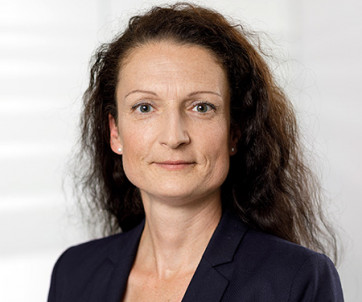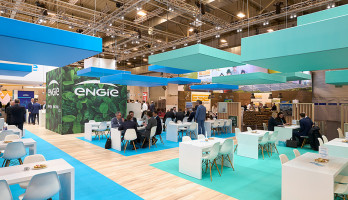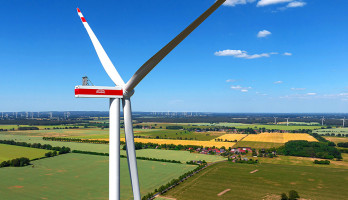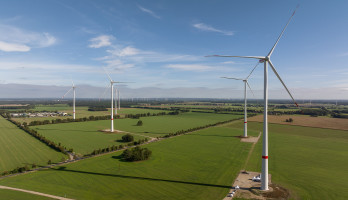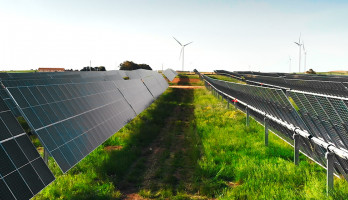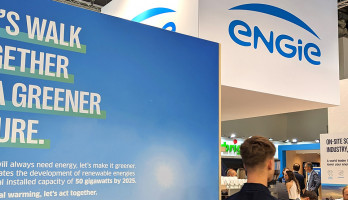
Innovative rental power models – more than the solar thermal system on the roof
Cheap, local and environmentally friendly – tenants should also be able to actively participate in the expansion of renewable energies via tenant electricity projects. The potential for the energy transition in our own house is great. According to a study commissioned by the German Federal Ministry for Economic Affairs and Energy (BMWi), up to 3.8 million homes could be supplied with tenant electricity in the next few years.
In 2017, the German Bundestag passed the Tenant Power Act in order to pave the way for tenant electricity models based on photovoltaics via state subsidies. However, the results are still modest. As part of alternative tenant power concepts, various service providers therefore rely on other energy sources and forms of generation to tap into the existing potentials. Accordingly, the concept of tenant electricity must also be broadened and understood in a much broader sense than is currently the case within the legal framework.
What is tenant electricity as defined by law?
According to the definition, which is to be found on the information portal Renewable Energies of the BMWi, tenant electricity is referred to as "electricity generated by solar installations on the roof of a residential building and from there is delivered and consumed directly, i.e. without power transmission to final consumers in this building or in residential buildings or ancillary facilities in a direct spatial context." Electricity from other (sustainable) energy sources is therefore not part of the definition.
As part of the tenant electricity concept, the electricity not used by the tenants is fed into the general grid and remunerated. In addition, tenant electricity eliminates certain cost components such as grid fees and electricity tax. In order to create further incentives for the extension of solar installations to residential buildings, additional support has been provided for every kilowatt hour generated since 2017 via the tenant electricity premium.
Subsidized tenant power from solar energy hardly in demand so far
Given the great potential of tenant electricity, the figures for the development so far have been sobering. According to the Federal Network Agency, the installed capacity of the solar installations, which benefit from the tenant electricity premium introduced in 2017, is less than 15 megawatts. For comparison: A modern wind turbine already achieves outputs of three to six megawatts. Experts believe that the reasons for the slow increase in demand for subsidized tenant electricity models to date are the complicated regulations and restrictive framework conditions of the Tenant Power Act. For example, they provide for the payment of a tenant electricity premium only for solar installations with a rated output of less than 100 kilowatts.
However, solar tenant electricity can be a suitable response to the challenge of housing companies to reconcile further climate protection measures with affordable rents, including ancillary costs. In this way, housing companies can make their contribution to achieving climate-neutral buildings without burdening tenants with additional costs. Solar tenant electricity is a solution to this problem, with climate-neutral electricity and electricity prices that are at least ten percent cheaper than the local basic utility. The startup SOLARIMO, founded by ENGIE, is focusing on this combination of climate protection and affordable ancillary costs.
Alternative tenant power models on the rise
Not included in the calculation are those tenant power projects that rely on alternative energy sources for generation. In recent years, for example, several thousand projects have been implemented with small, decentralized CHP units. A broad definition of tenant electricity therefore includes not only photovoltaics, but also other energy sources and generation systems along the lines of decentralized power generation close to the consumer – this includes combined heat and power plants, small wind turbines or a combination of different technologies.
Tenant flow from combined heat and power stations – numerous advantages for tenants and landlords
The use of combined heat and power plants as part of a tenant electricity project is particularly suitable for properties between 20 and 200 residential units and, due to its control options, allows a high degree of flexibility. For example, unlike photovoltaics, production can be adapted to the energy demand of the building at any time. For tenants and landlords, the joint generation of electricity and heat brings several advantages:
Benefits for tenants:
- favorable electricity prices through efficient cogeneration
- local production: the long-distance transport of electricity is eliminated (and thus also the transmission loss)
- active participation in the energy transition through sustainable electricity supply
benefits for landlords:
- providing the tenant power as additional benefit for tenants
- increasing attractiveness of the rental property
- Positive effects for image
Inexpensive tenant electricity from your own basement
ENGIE Deutschland enables its heating customers to generate electricity in their own homes. A combined heat and power plant in the basement of the property provides the electricity required for all tenants. The joint generation of electricity and heat achieves a particularly high level of energy efficiency - fuel consumption and emissions are reduced while the power grids are relieved at the same time.
As part of its tenant electricity model, ENGIE Deutschland acts as a partner to the landlord and takes on the complete service: from the planning, financing and construction of the systems to operation and electricity distribution within the property to the feeding in and marketing of excess electricity.
Our Expert
